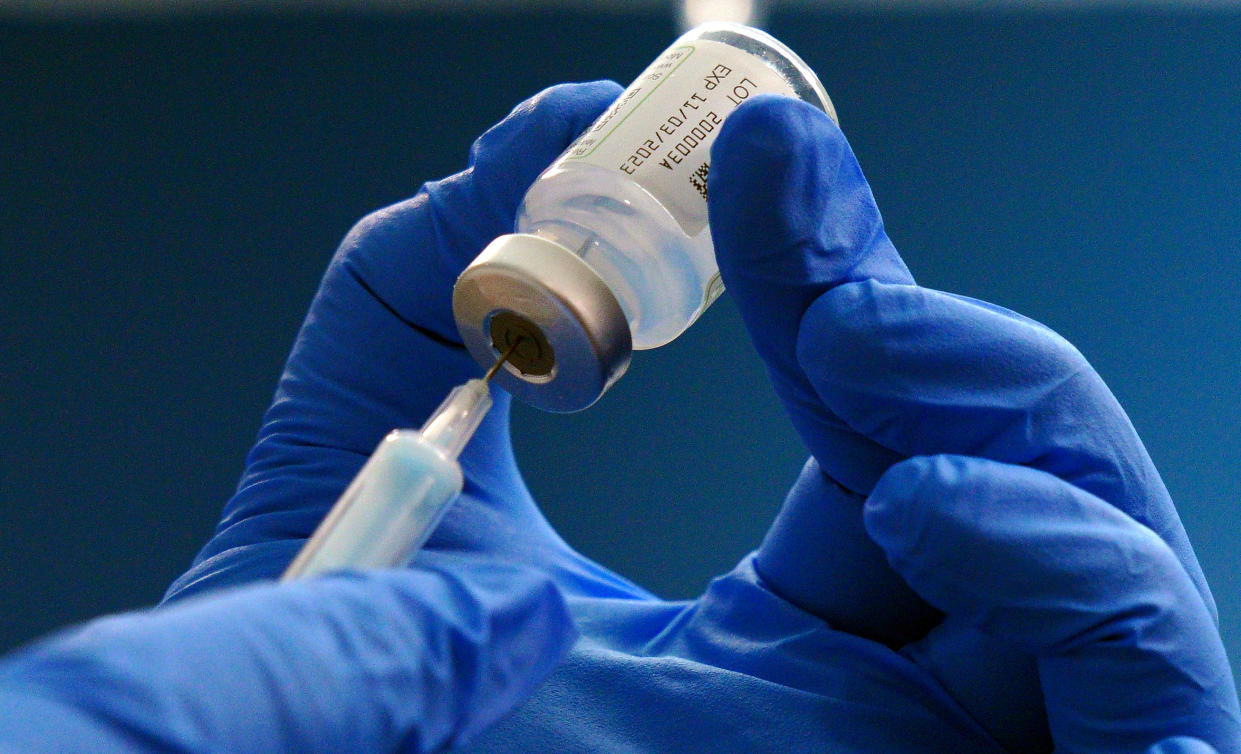How Moderna is expanding its product pipeline beyond COVID
Moderna (MRNA) today unveiled the latest on its efforts to expand beyond COVID vaccines before its R&D day on Wednesday.
It announced, for instance, the positive Phase 3 results of its mRNA flu vaccine, bringing the once-small biotech one step closer to its goal of having a full suite of respiratory virus vaccines.
"We think we have, hopefully, completed the big three ... the big three being COVID, RSV, and flu," said CFO Jamey Mock.
"We're quite encouraged by the data, particularly around flu," Mock told Yahoo Finance.
The topline results, which don't give specific efficacy numbers, showed the vaccine performed well in protecting against flu for up to six months — similar to the protection provided by current vaccines. The company has several flu candidates to protect against all four common strains, and said the one furthest along in trials performed well in a Phase 1/2 trial against Sanofi's (SNY) Fluzone HD.
But at least one analyst was concerned by the flu strategy, as Moderna already suffered a setback earlier this year.
"Despite optimistic positioning by MRNA’s best-in-class investor relations team, this update demonstrates mRNA-1010's lack of a competitive profile as an immunogenicity label, and the asset’s challenging reactogenicity profile thus far make this a commercial non-starter," said Leerink Partners' Mani Foroohar.
"The respiratory franchise, now a seasonal business with an annual recurring revenue stream, is targeting an approximately $30 billion annual market, comprised of an approximately $15 billion COVID-19 market, $10 billion RSV market, and $6 billion flu market, with the potential for growth with more effective vaccines," Moderna said in a statement Wednesday.
"Respiratory products sales in 2027 are expected to be in the range of $8 billion-$15 billion, depending on vaccination rates, efficacy and company market share," the company added.
Moderna is also pursuing a combination RSV, COVID, and flu vaccine that the company hopes will make getting fall vaccines easier for the public, Mock said.

Capturing COVID momentum
The company has had an incredible growth story in the past few years. Pre-pandemic, it was a small biotech with a decade of work on the mRNA platform under its belt and zero commercial products.
Coming out of the pandemic, it not only has its first commercial product but also a windfall worth tens of billions of dollars from the global demand it suddenly had to supply.
But now, the company has to both allocate the capital efficiently as well as right-size its COVID operations. Moderna currently has too much manufacturing capacity because of the slowdown in sales of the COVID vaccine compared to the pandemic era.
"There is a lot of what I call waste in there which is unutilized capacity or excess material that we are writing off or spending a lot of time trying to resize," Mock said.
If there is ever suddenly a need to revert to a $20 billion COVID business, the company can scale right back up. The current business is projected to be less than half that, annually, with an estimated total of between $6 billion to $8 billion this year, the company said in its latest earnings report.
This is why the company is aggressively pursuing diversification of its portfolio.
"We really only have one product, right now. Now is the time to set it up to have 15 products or more," Mock said. "If we do it right, we will scale very differently than any other company, and that's what we're focused on doing right now," he added.
The company hopes to launch 15 new products in the next five years and have up to 50 new clinical trial candidates in the pipeline.
"That's what keeps us motivated. We hope that's what keeps investors motivated because I think that is truly the best use of capital, and we are quite wise about it," Mock said.
Meanwhile, the company has to ensure it is doing enough to attract the right partners since there are very few viable target acquisitions for its mRNA pipeline.
"We're building a pipeline for a lot of unmet diseases and we think that the mRNA platform has a lot of barriers to entry. It will take a lot of time for somebody to replicate the impact of our mRNA platform," Mock said.
Follow Anjalee on Twitter @AnjKhem.
